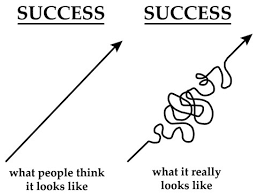No financial plan will be successful without actionable goals. When managing your personal finances, it’s important to have a goal-oriented mindset—what are your financial objectives? How will you achieve them? And how long are you willing to work on them for success?
When constructing your personal finance objectives, they should be SMART—Specific, Measurable, Achievable, Realistic, and Time-oriented. Each of your goals should slide into these five categories in some way or another—especially if you find yourself falling behind.
If you’re looking for assistance in creating a personalized financial plan, speak with a CERTIFIED FINANCIAL PLANNER™ professional at Good Life Financial Advisors of NOVA today!
Specific

Having vague financial goals is a sure-fire way to ensure they become forgotten and irrelevant. In order to set SMART goals, you need to dig a little deeper. Why do you want to save more money? To get out of student loan debt? To fund a nest egg for early retirement? Or do you just want extra cash in a travel fund? Specific, narrow goals are much easier to meet than vague, nondescript ones.
Measurable
Goals that can be measured make it easier to create achievable milestones. Let’s say you have a credit card debt of $10,000 and your goal is to erase that debt as quickly as possible. Start with something measurable—like paying $400 per month instead of the minimum monthly payment. With $400 per month going to your credit card, you’ll be able to not only measure how long it will take you to become debt-free, but you’ll be able to track your progress more efficiently.
Attainable

Financial goals should be something we have a reasonable chance of achieving. If you have a vague objective of becoming a billionaire by age 50, that’s likely something you won’t attain. However, if you make an annual salary of $80,000, accumulating a nest egg of $1 million by the time you reach retirement age is not only attainable, but practical. Don’t set goals you’re unlikely to achieve—otherwise, the incentive to quit will be strong.
Realistic
“Shoot for the stars” is good advice for a young entrepreneur, but when you’re building a financial plan, a dose of realism is needed for it to be effective. It’s important to know yourself and your financial strengths and weaknesses. For example, if you’re a big fan of eating out, cooking more meals at home to save money might not be a sacrifice worth making—you’ll probably have greater odds of success cutting your personal ending in other areas.
Realistic goals are different from attainable goals because realism forces us to confront our bad habits. Sure, spending only $200 a month on credit cards might be an attainable goal. But if you’re reckless with credit and have a history of overspending, it may not be a realistic one.
Time-Oriented

Your financial goals should have an endpoint where you can measure success versus failure. In our example above, we discussed someone who wants to erase their $10,000 credit card debt by paying an extra $400 per month. In this particular scenario, it would take 2 years to pay off that credit card bill—and that’s okay! Financial goals often involve long-term frames, but it’s still important to define that time frame. Your financial goals in your late 50s will likely be far different than they were in your early 30s. Always keep a time horizon in mind when organizing your financial objectives.
What Happens If You Fall Behind?
Missing a financial milestone can happen, and it’s no reason to panic. If you find yourself falling behind on your financial goals, you may need to re-evaluate them through the lens of the SMART acronym. Are your goals specific, measurable, and attainable? Were they realistic in your current situation? If you find yourself falling short, consider these steps:
- Create new financial goals. Remember, these aren’t written in stone tablets. If you overshot with your first financial plan, you can always cut back to smaller, more achievable goals. Maybe saving an extra $20,000 annually is proving too difficult—why not drop it back to $10,000 annually and see if that’s more sustainable.
- Spend less or make more. In order to improve our personal balance sheets, we really only have two options—cut spending or increase income. If you have time to take a part-time job to increase your savings, you may not need to make any lifestyle cuts. But if increasing your income isn’t an option, the only other choice is to find somewhere to spend less.
- Don’t panic. Life is full of roadblocks, and you shouldn’t get discouraged if you encounter them. Losing a job or suffering a serious injury or illness can throw your well-laid plans completely out of whack. If you’re worried about running out of time to achieve your financial goals, consult with your advisor and revise your financial plan.
Work with an Independent Financial Advisor
If you have any questions about how to set SMART goals and what to do if you fall behind, a financial advisor from Good Life Financial Advisors of NOVA can assist you. Contact us today!



